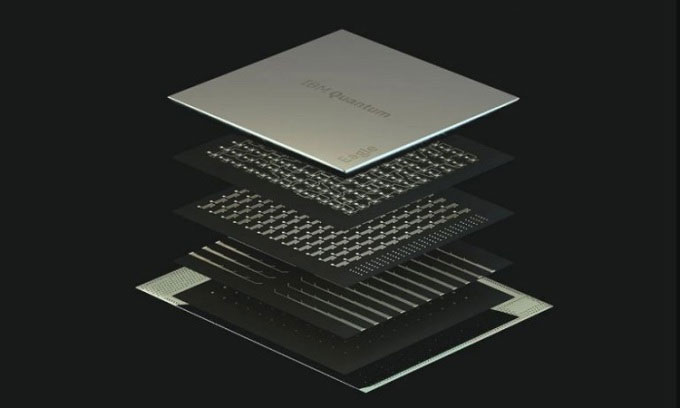IBM has launched Eagle, the world’s most powerful quantum chip with 127 qubits, marking a significant advancement that enables commercial quantum computing to surpass traditional computing.
Quantum computers leverage quantum physics to elevate computational capabilities to a new level. In traditional computers, data is stored and processed bit by bit, represented by 0s and 1s. However, in quantum computers, qubits can utilize both states simultaneously. This means that each additional qubit exponentially increases the machine’s processing power.

Structure of the Eagle quantum chip. (Image: IBM)
With 127 qubits, Eagle is currently the most powerful quantum chip in the world, far surpassing China’s Jiuzhang 2.0 with 113 qubits, Google’s Bristlecone with 72 qubits, and IBM’s own Hummingbird with 65 qubits. The company stated that this breakthrough was made possible by new chip technology that allows for the integration of more qubits. The qubits are arranged in a single layer to reduce error rates while the control wiring system spans multiple physical levels.
IBM reported that Eagle is the company’s first processor with capabilities that far exceed those of traditional supercomputers, a milestone often referred to as quantum advantage. The company estimates that reproducing one of Eagle’s states on a classical computer would require more bits than the total number of atoms in the human body on Earth.
However, IBM is not the first company to achieve quantum advantage. Google accomplished this in 2019 with its 53-qubit Sycamore processor. Meanwhile, the first-generation Jiuzhang computer also demonstrated quantum advantage last year, completing a calculation in just minutes that would take conventional supercomputers 2.5 billion years.
IBM has outlined a roadmap for future quantum processors, planning to release the IBM Quantum Osprey with 433 qubits next year, followed by Quantum Condor with 1,121 qubits in 2023.


















































